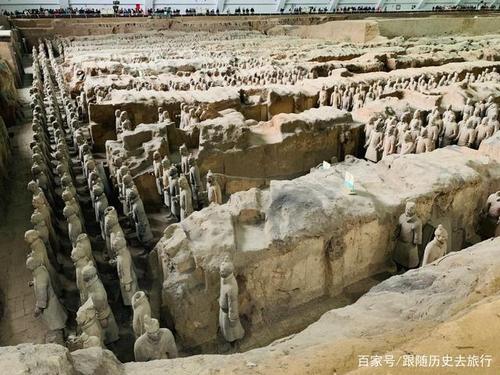
Are There Any Intact Terracotta Warriors?
The Terracotta Army, a vast collection of terracotta sculptures depicting the armies of Qin Shi Huang, the first emperor of China, is a breathtaking archaeological marvel. However, many wonder about the state of preservation of these ancient figures.
The Discovery and Condition of the Warriors
When unearthed in 1974, the Terracotta Army was a monumental discovery, but the warriors were not found in pristine condition. Most were broken into numerous pieces, having collapsed and been crushed by the weight of their burial chambers over centuries. Fires set by invading armies shortly after the emperor's death also contributed to the damage, causing the wooden structures supporting the roof of the pits to collapse and the intense heat to further degrade the figures.
Painstaking Restoration Efforts
Despite their fragmented state, the sheer number and remarkable detail of the warriors have fueled extensive restoration efforts. Chinese archaeologists and conservators have meticulously pieced together countless fragments, painstakingly restoring many warriors to their former glory. These efforts involve identifying matching pieces, utilizing specialized adhesives, and employing advanced techniques to fill in gaps and stabilize the fragile terracotta.
Original Color and its Disappearance
While we typically picture the Terracotta Army in their current earthen hues, they were originally adorned with vibrant pigments. Traces of paint, revealing a palette of red, blue, green, and other colors, offer a glimpse into their once-brilliant appearance. Unfortunately, exposure to air and humidity upon excavation caused the lacquer used to bind the paint to rapidly deteriorate, leading to a quick loss of much of the original color.
An Intact Warrior?
While many warriors have been substantially restored, no warrior has been unearthed completely intact. The weight of the collapsing ceiling and earth, combined with the passage of time, made such a finding highly improbable. However, the discovery of a bronze chariot and horses in excellent condition near the tomb complex gives us a sense of the artistry and craftsmanship that went into creating the Terracotta Army, offering a glimpse into what the warriors might have looked like in their prime.
A Testament to Ancient Craftsmanship
Despite the challenges posed by their fragmented state, the Terracotta Army remains a testament to the extraordinary skill and artistry of the ancient Chinese craftspeople. The meticulous detail, individual expressions, and sheer scale of the army continue to captivate and amaze visitors from around the world.
Q&A
1. How long did it take to make the Terracotta Army?
It is estimated that it took approximately 40 years and hundreds of thousands of laborers to create the vast Terracotta Army.
2. Why was the Terracotta Army built?
The Terracotta Army was built to accompany Qin Shi Huang, the first emperor of China, in the afterlife and to protect him from his enemies.
3. What is the significance of the different features and details of the warriors?
The different ranks, uniforms, hairstyles, facial features, and even the grip detail on the shoes of the warriors all reflect the strict military hierarchy and the emperor's desire to create a realistic and formidable army for the afterlife.